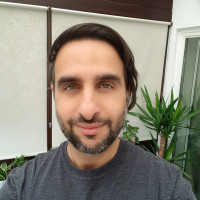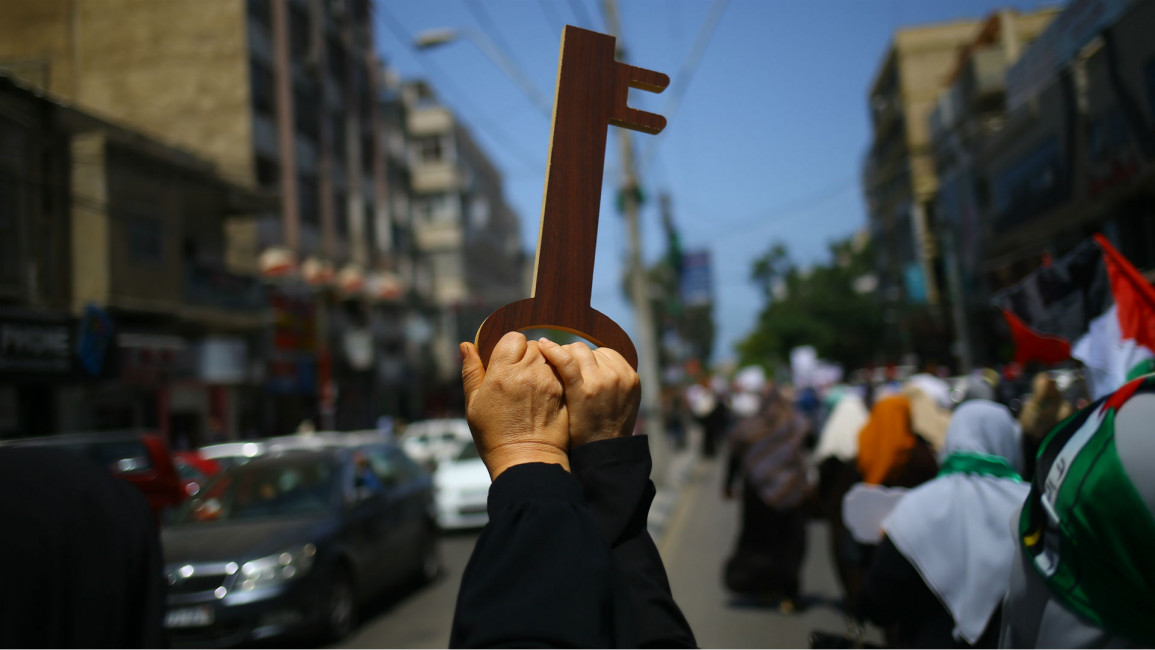
We saw the Nakba through our grandparents’ eyes, and we internalised it
History is a reasoned, evidence-based reconstruction of the past, and is read and shared by everyone. Memory, on the other hand, is experiential and deeply personal.
This is certainly true for most historical traumas, and for the Nakba generation, the abrupt loss of Palestine was so disorientating and intense that it lost much of its historical context. Memory became history and, as such, the Nakba became everyone’s personal story.
To my grandfather, the political and historical complexities of the Nakba were secondary to the deep sense of betrayal he felt. First by the British, who “handed Palestine over to the Jews,” and second, by what he called “the antiquated Arab armies,” who failed to save Palestine in 1948.
The most resonant of memories, possibly the most personal, for him was the betrayal of “that Jewish doctor,” as he often referred to him. The doctor fled Nazi-occupied Poland in 1940 and resettled in Palestine near my grandfather’s village.
“He lived safely in our midst for years, we even helped him build a clinic in the region. But when the Haganah came to our village, he joined them and turned his gun against us,” my grandfather would say bitterly.
It was not long after the massacre of Deir Yassin in April 1948 that the news of Zionist atrocities began to spread. The attacks on Palestinian villages were meant, among other things, to spread terror and panic among the people and force them to leave.
''My grandfather kept his house key, the deeds of his land, and thought of them as his evidence of rightful ownership. Until his passing in 2014, at nearly 100, he continued to speak of his Palestine, of his utopian village, and of his olive and citrus trees, the same stories time and again.
“Rumour had it that the Jewish gangs were massacring everyone in their path. We literally had three rifles in the entire village, thanks to the British who severely punished any Palestinian who possessed a gun. Defenceless, we had no choice but to leave for safety, hoping we could return soon after the hostilities have ceased.”
“And here we are, still waiting…,” he would add.
“It was like Judgement Day,” my grandmother would interject, “…many did not have the time to even collect their belongings or lock their doors.”
My grandfather’s village, Al-Sawafir Al-Gharbiyyeh, roughly 30 Kilometres northeast of Gaza, was depopulated in May 1948, as part of the second stage of Operation Barak, itself part of Ben-Gurion’s overarching Plan Dalet, which paved the ground for the ethnic cleansing of Palestine.
Like dominos, every village my family took refuge in fell to the Zionist militias, and the exodus of refugees grew ever larger.
As they arrived at the ancient Canaanite port town of Al-Majdal (Asqalan, later Hebrewised to Ashkelon), 13 Kilometres north of Gaza, they found the Egyptian army - along with Palestinian fighters - had already dug in to defend the town.
Over the next six months, the Zionist troops relentlessly shelled the town. They eventually pushed back the ill-equipped and outnumbered Egyptian troops, and with them most of Al-Majdal’s 11,000 residents and the masses of refugees from the nearby villages, toward Gaza.
Al-Majdal was occupied in November 1948 as part of Operation Yoav.
On foot under the scorching sun, my grandfather described the journey from Al-Majdal to Gaza as a modern-day Via Dolorosa, a trail of despair and suffering.
Sheltering two young children and a wife who had just given birth during the exodus, on a pile of hay assisted by a fellow woman refugee, my grandfather was also busy looking for his mother whom he had lost during the Al-Majdal shelling.
“We found her in a hospital in Gaza having sustained injuries during the shelling. She died shortly after,” my grandfather told us.
With the majority of Palestinians driven out of their homes, a new demographic reality emerged. The newly established Jewish state issued a series of measures to make this reality permanent.
Those who tried to return to their homes, either to resettle or collect their belongings, were labelled “infiltrators,” and the Israeli army was authorised to shoot or arrest them.
My grandfather spoke repeatedly about friends and acquaintances who went back to the village and never returned. It is now believed that the Israeli security and civilian guards, and their mines and boobytraps, killed 2,700-5,000 Palestinian “infiltrators” during 1949-56.
However, in his grievance over those people, my grandfather lost sense of the most surreal irony of all, the fact that one can become an infiltrator, an illegal entity, on his land.
Days turned into weeks, and weeks into months, and Gaza became his de facto home. And as the UN tents turned into brick rooms, and those into a small refugee community, then a refugee camp, the mere 30 Kilometre distance between the new reality and his Palestine grew wider.
Gradually, his village became a set of stories about a “paradise lost.”
As children listening to those stories, we learnt about a vanished homeland, about a utopian society covered with leafy footpaths, lines of olive trees evanescing into the horizon, and fields embellished with countless poppies.
Such mythologization served to emphasise the grotesque reality in the refugee camp, and charged us with a deep sense of loss and immense nostalgia for a piece of land upon which we never stepped foot.
Throughout his life, and much like most of his peers, my grandfather grappled with the inability to integrate and regulate the feelings of loss. He transformed trauma into a series of defence mechanisms. Of them was the attribution of exaggerated positive qualities to pre-Nakba Palestine and the devaluation of life thereafter. This was meant to normalise, and therefore alleviate, his post-Nakba shock as a refugee and under occupation. It was also a way to keep the hope of return alight.
He kept his house key, the deeds of his land, and thought of them as his evidence of rightful ownership. Until his passing in 2014, at nearly 100, he continued to speak of his Palestine, of his utopian village, and of his olive and citrus trees, the same stories time and again.
There was a sense that Palestine was as real as its memory, and that the more we clung to that memory, the more we felt the loss. And the more we did that, the possibility of return became more real.
With that, my grandfather was the epitome of that Palestinian, whom Mahmoud Darwish once described in his poetry, as someone “diseased with the incurable ailment of hope.”
But it seems this ailment is infectious and transgenerational in its effect. Today, four generations after the Nakba, the nostalgia for that “paradise lost” and the urge for return is no less prominent.
Indeed, the old have died, but Palestine had not died with them.
The young still remember.
The young still resist.
74 years on.
Dr Emad Moussa is a researcher and writer who specialises in the politics and political psychology of Palestine/Israel.
Follow him on Twitter: @emadmoussa
Have questions or comments? Email us at: editorial-english@alaraby.co.uk
Opinions expressed in this article remain those of the author and do not necessarily represent those of The New Arab, its editorial board or staff.



